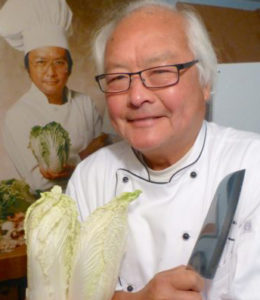Wok & Roll by Peter Kwong, (Frederic) Inter-County Leader
» Download this column as a Word document
Being Chinese, I love to hear when folks tell me that they like Chinese food. But when I asked them what kind of Chinese food they fancy, they would give me that blank look and say, “uh, what?”
I would be a bit irritated at the beginning. But then, as I spent more and more time studying foods from different regions in different countries, I began to realize (but never will admit) just how dumb that question was.
So, let’s keep our focus on Chinese foods, shall we? We see restaurants claiming they specialize in cuisines from certain regions of China — Cantonese, Shanghai, Szechuan, Hunan, Peking and even Mongolian.

So, what’s the difference?
Hong Kong and Canton (also known as Guang Tung or Guang Chau) are located on the southern tip of China. Being next to the coast and close to the ocean, seafood is plentiful.
Vegetables and fruits love growing in this tropical region. And rice is a steady daily staple.
Most dishes are just lightly seasoned, steamed or quick stir-fried. Chefs are challenged to create dishes that are simple yet elegant.
Dim Sum houses are very popular here. Dim Sum (Touch of the Heart) is served
Most Dim Sum houses are packed on
You pick out what you want when the carts pass by, and the server adds up how many dishes you had when you’re done, and that’s your bill. Another tradition of Dim Sum houses is that they always serve you tea of the highest quality (no wonder, most of them charge $1 per head).
There are many rules that we observe in the Dim Sum houses. Let’s talk about them later.
On the west are the regions of Szechuan, Hunan
Red chilies are added to most dishes. Rice is abundant but not as in demand as in the south. Tofu is popular here.
And you will find the ingredients of a lot of products are made of soybeans — soy milk, soy wrappers, buns with sweet soy paste … you name it.
“Ma Pao Tofu” is served in most Szechuan restaurants. Legend says that many years ago, a widow had a tiny roadside café serving the travelers. She had only one entree to serve, braised tofu.
But she would serve it the way as requested — more spice, more aroma, more heat, whatever way you expected. Her braised tofu became so popular that the customers named it after her.
Further north is Beijing (Peking), the capital of China. The north is not known for its foods.
Mutton and pork are popular, and chickens are raised for their eggs by the poor. Only on special occasions would wealthy families put chicken on their menu.
Duck, however, is a different story. Actually, most Peking Duck is served three ways, and the crispy skin is the main attraction:
- The crispy skins are carefully sliced off the perfectly roasted duck. Then the skins are served in small, puffy pancakes with scallions and a dash of plum sauce.
- The meat is taken off the bone, and stir-fried with vegetables.
- The bones are used to make a soup.
There are no rice fields in the north, but wheat fields are plentiful. Hence, no rice; but lots of flour for noodles, pancakes, dumplings and steamed buns.
Most vegetables used are fermented or pickled cabbage and mustard greens harvested in summer. A lot of animal fats are added to the dish. Garlic, leeks
On the east sits Shanghai, another seaport that is vital to the trading business of China. The great Yangtze River rages from the west and ends up merging with the mighty ocean in the east. Hence, Shanghai is
Sauces are known to be heavy, pungent and plentiful. One can always taste the hint of rice wine and the sweetness from the dark cane sugar. My favorite, Siu Long Bau, is so very delicate and tasty.
Those are steamed buns served in a bamboo steamer. You have to use the spoon to dish it out carefully from the container. Otherwise, the skin would break, and you would have the soup all over the table.
And the dipping sauce is another story. One must use finely sliced ginger, with a touch of vinegar.



